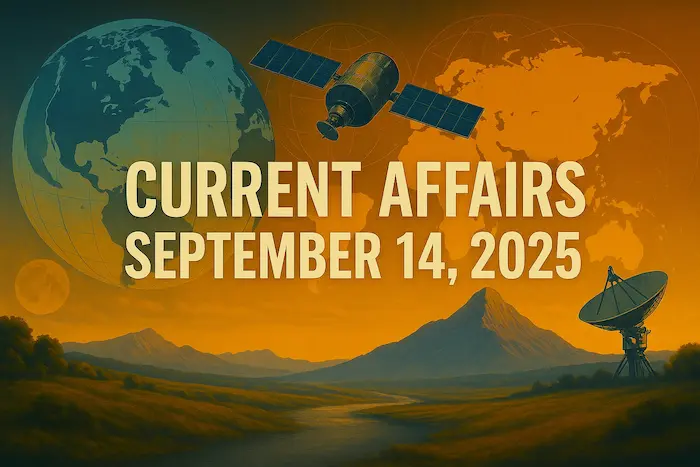1. National Lok Adalat: A Mechanism for Speedy and Amicable Justice – Polity

Why in News?
On September 13, 2025, a nationwide National Lok Adalat was held with a focus on resolving the backlog of traffic e-challans related to minor offences, showcasing the role of Lok Adalats in delivering quick and informal justice.
Key Takeaways
What is a Lok Adalat?
- A statutory alternative dispute resolution (ADR) forum in India.
- Established under the Legal Services Authorities Act, 1987.
- Facilitates amicable settlement of disputes without formal trial.
National Lok Adalat – Features
- Held 4 times a year, across all levels of courts – from the Supreme Court to Taluk courts.
- Organized under the supervision of the National Legal Services Authority (NALSA).
- Focuses on resolving:
- Pending cases in courts
- Pre-litigation disputes eligible for compromise
Types of Cases Taken Up
Matrimonial disputes
Bank recovery cases
Labour disputes
Accident and compensation claims
Land acquisition matters
Civil disputes
Compoundable criminal cases
Minor traffic violations and e-challans
Excluded Cases:
Non-compoundable criminal offences
Serious crimes or sensitive matters
Legal Framework and Composition
- Statutory body under Legal Services Authorities Act, 1987
- Amended in 2002 to provide for Permanent Lok Adalats (PLAs) for Public Utility Services
- Composition:
- Judicial officer (Chairperson)
- A legal professional
- A social worker
Key Legal and Procedural Aspects
| Feature | Explanation |
|---|---|
| Award Status | Final, binding, and enforceable as a civil court decree |
| Right to Appeal | No appeal lies against Lok Adalat awards |
| Jurisdiction | Can take up cases referred by courts or mutually agreed pre-litigation disputes |
| Powers | Powers of a civil court; treated as judicial proceedings |
| Court Fees | No court fee applicable; fees refunded if already paid |
| Time and Cost | Speedy, low-cost, and accessible justice mechanism |
Benefits of Lok Adalats
- Reduces burden on regular courts
- Promotes legal awareness and access to justice
- Ensures direct communication between litigants and judges
- Encourages compromise and social harmony
- Useful in mass disposal of repetitive or minor cases (e.g., traffic challans, utility disputes)
Historical Context
- First Lok Adalat held in Gujarat in 1982
- Originated as a voluntary conciliatory forum
- Now an institutionalized system to promote ADR mechanisms in India
Exam Connect – Possible Questions
Prelims
1. Which of the following statements is correct about Lok Adalats?
A. Their decisions are not legally binding.
B. Only civil cases can be taken up.
C. They can take up both pending and pre-litigation cases.
D. An appeal lies against their awards in the High Court.
Answer: C. They can take up both pending and pre-litigation cases.
2. Under which Act were Lok Adalats given statutory status in India?
A. Civil Procedure Code, 1908
B. Legal Services Authorities Act, 1987
C. Arbitration and Conciliation Act, 1996
D. Constitution of India, Article 39A
Answer: B. Legal Services Authorities Act, 1987
Mains
1.”Lok Adalats represent an important step towards ensuring access to justice for all.” Discuss the role, effectiveness, and limitations of Lok Adalats in India’s judicial system.
2. Evaluate the role of Lok Adalats in promoting Alternative Dispute Resolution (ADR) in India. How do they contribute to reducing the backlog of cases in the judiciary?
2. Bengaluru’s Second Biodiversity Heritage Site: Strengthening Urban Ecology – Environment
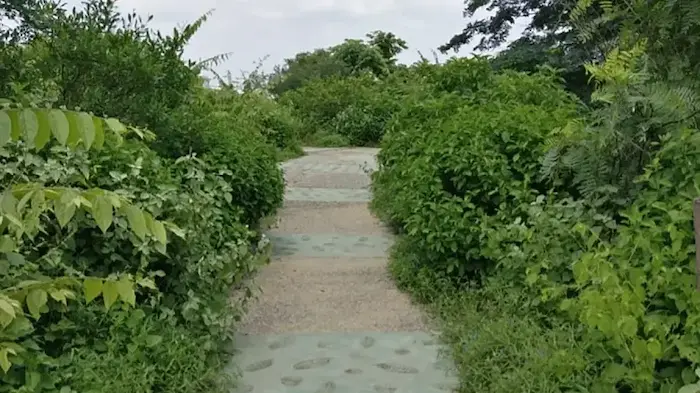
Key Takeaways
What is a Biodiversity Heritage Site (BHS)?
- Legal Backing: Recognized under Section 37(1) of the Biological Diversity Act, 2002
- Definition: BHSs are ecologically fragile ecosystems that host wild and domesticated species, including rare, threatened, or endemic species.
- Objective: To conserve biological diversity, support ecological balance, and promote sustainable practices without disrupting the livelihoods of local communities.
Governance and Institutional Framework
| Element | Role |
|---|---|
| State Government | Declares an area as a BHS in consultation with local bodies |
| State Biodiversity Boards (SBBs) | Propose sites, monitor ecological status |
| Biodiversity Management Committees (BMCs) | Facilitate community participation and documentation |
Features of the New BHS in Bengaluru
- Location: Cantonment Railway Colony, Bengaluru
- Area: 8.6 acres
- Conservation Focus:
- Preserves urban green space with native flora and fauna
- Hosts rare, endangered, and domesticated species
- Acts as a natural carbon sink and urban microclimate regulator
Community-Centric Conservation
- The BHS model emphasizes community stewardship.
- Customary rights are not infringed; local communities are encouraged to engage in sustainable activities.
- Strengthens urban ecological literacy and local biodiversity registers.
Historical Context
- First BHS in India: Nallur Tamarind Grove, Bengaluru (2007)
- Karnataka continues to be a leader in BHS declarations, promoting conservation within urban and peri-urban ecosystems.
Importance of BHS in Urban Areas
- Enhances ecological resilience amid rapid urbanization
- Protects pollinators, native trees, and soil biodiversity
- Supports climate action through localized ecosystem services
- Serves as a model for citizen-led conservation initiatives
Exam Connect – Possible Questions
Prelims
1. Under which law are Biodiversity Heritage Sites (BHS) declared in India?
A. Forest Conservation Act, 1980
B. Environment Protection Act, 1986
C. Wildlife Protection Act, 1972
D. Biological Diversity Act, 2002
Answer: D. Biological Diversity Act, 2002
2. Consider the following statements about Biodiversity Heritage Sites (BHS):
1.They can only be declared by the Central Government.
2. Community involvement is a key component in their management.
3.The first BHS in India was located in Karnataka.
Which of the above statements are correct?
A. 1 and 2 only
B. 2 and 3 only
C. 1 and 3 only
D. 1, 2 and 3
Answer: B. 2 and 3 only
Mainss
1.”Urban biodiversity heritage sites serve as vital lungs for cities while promoting community-driven conservation.” Discuss the significance of BHS in urban planning and environmental governance, with examples.
2. Explain the institutional framework for declaring and managing Biodiversity Heritage Sites (BHS) in India. What challenges exist in their implementation, particularly in urban areas?
3. Sahyadri Tiger Reserve: Strengthening Conservation in the Western Ghats – Environment
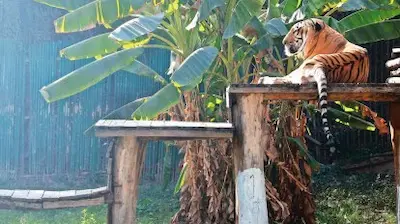
Why in News?
The Union Environment Ministry has approved the capture and translocation of eight tigers from the Tadoba-Andhari and Pench Tiger Reserves to the Sahyadri Tiger Reserve (STR) in western Maharashtra. This initiative aims to repopulate the reserve, prevent local extinction, and strengthen ecological balance.
Key Takeaways
Location and Status
| Feature | Details |
|---|---|
| State | Maharashtra |
| Geographic Region | Sahyadri Range, Western Ghats |
| Districts Covered | Satara, Sangli, Kolhapur, and Ratnagiri |
| Year of Declaration | 2010 as a Tiger Reserve under Project Tiger |
| UNESCO Status | Part of the Western Ghats World Heritage Site (2012) |
| Core Components | Koyna Wildlife Sanctuary and Chandoli National Park |
Geographical and Ecological Features
Forests and Flora
- Moist evergreen, semi-evergreen, and dry deciduous forests
- Rich in endemic tree species:
- Karvi, Terminalia, Emblica (Amla), Bamboo
Water Bodies
- Hosts two major reservoirs:
- Shivsagar (Koyna Dam)
- Vasant Sagar (Warana River)
- These water bodies are critical catchments supplying drinking and irrigation water to large parts of western Maharashtra.
Fauna and Biodiversity
- Key Mammals:
- Bengal tiger (low density), leopard, dhole (Indian wild dog), gaur, mouse deer, four-horned antelope, giant squirrel
- Birds:
- Hornbills, river terns, vultures (important for scavenger ecosystem)
- The area is part of the Western Ghats biodiversity hotspot—one of the eight “hottest hotspots” in the world.
Why Translocation?
Tiger Population Crisis
- STR has only 5–9 tigers as per data since 2018.
- Although it has a rich prey base, the lack of a breeding population puts the tiger at risk of local extinction.
Proposed Solution
- Translocation of 8 tigers from Tadoba and Pench aims to:
- Stabilize predator-prey balance
- Boost breeding potential
- Ensure genetic diversity
- Strengthen ecological corridors
Corridor Connectivity
- STR connects with:
- Radhanagari Wildlife Sanctuary (North)
- Anshi-Dandeli Tiger Reserve (South, Karnataka)
- Vital for tiger dispersal, genetic flow, and landscape-level conservation.
Wider Environmental Significance
- Supports Project Tiger goals and India’s commitments under:
- Convention on Biological Diversity (CBD)
- UN Sustainable Development Goals (SDG-15 – Life on Land)
- Helps conserve river catchments vital to water security in the Deccan region.
Challenges
- Human-wildlife conflict risk due to increasing movement
- Monitoring translocated tigers and ensuring adaptation
- Ensuring community support and awareness
- Protection against poaching and encroachment
Exam Connect – Possible Questions
Prelims
1. The Sahyadri Tiger Reserve is located in which of the following mountain ranges?
A. Vindhya Range
B. Aravalli Hills
C. Satpura Range
D. Western Ghats
Answer: D. Western Ghats
2. Consider the following statements:
1.Sahyadri Tiger Reserve is part of the UNESCO Western Ghats World Heritage Site.
2.It shares corridor connectivity with Anshi-Dandeli Tiger Reserve in Karnataka.
3.The tiger population in the reserve has been increasing steadily over the past decade.
Which of the above are correct?
A. 1 and 2 only
B. 2 and 3 only
C. 1 and 3 only
D. 1, 2 and 3
Answer: A. 1 and 2 only
Mains
1.“The translocation of tigers to Sahyadri Tiger Reserve is not just a wildlife conservation move, but a strategic environmental investment.” Discuss the ecological and hydrological importance of the Sahyadri Tiger Reserve and the rationale behind the tiger translocation plan.
2. Analyze the role of ecological corridors in tiger conservation in India. How does the Sahyadri landscape contribute to corridor-based wildlife management?
4. PM Modi’s Manipur Visit: 5 Key Challenges in the Conflict-Hit State – Governance
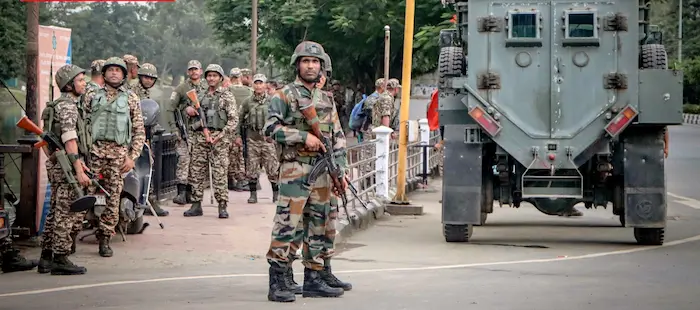
Why in News?
Prime Minister Narendra Modi is visiting Manipur on September 13, marking his first visit since the ethnic violence erupted in May 2023 between the Meitei and Kuki-Zo communities. While the intensity of violence has decreased, the state still faces critical structural and societal challenges.
Key Takeaways
Background: The Manipur Conflict
- Ethnic violence erupted in May 2023, primarily between:
- Meitei community (dominant in the Imphal Valley)
- Kuki-Zo tribes (residing in hill districts)
- Over 27 months, the violence led to:
- Deaths, displacement, destruction of homes and institutions
- President’s Rule was imposed amid governance breakdown
- No effective political reconciliation or inter-community dialogue has emerged
The 5 Critical Challenges in Manipur
Mass Displacement & Humanitarian Crisis
- Over 57,000 people remain displaced, living in 280+ relief camps.
- Meiteis displaced from hill areas like Moreh, Churachandpur, Kangpokpi.
- Kuki-Zos displaced from Imphal and surrounding towns.
- Conditions in relief camps are poor, with mental health, education, and livelihood disruptions widespread.
Security & Movement Restrictions
- The state is unofficially divided into Meitei-dominated valley areas and Kuki-Zo dominated hill districts.
- Buffer zones controlled by central forces restrict inter-community movement.
- Highways and airports are inaccessible to one community or the other.
- Fear of reprisal attacks and lack of policing trust further restricts mobility.
Governance and Political Vacuum
- Imposition of President’s Rule in the wake of failed state governance.
- Administrative decisions are seen as biased or ineffective by either side.
- Lack of political dialogue—no concrete roadmap for inclusive state governance.
- Elections and public institutions are largely non-functional in affected areas.
Erosion of Inter-Community Trust
- Deep social fractures remain—violence has solidified ethnic segregation.
- Incidents of violence, propaganda, and ethnic rhetoric have widened mistrust.
- Reconciliation efforts are almost non-existent; no civil society-led peacebuilding process has taken root.
- Fear of ethnic dominance and lack of autonomy among both communities remains high.
Border Tensions and Immigration
- Manipur shares a sensitive border with Myanmar, particularly affected by:
- Illegal immigration
- Cross-border movement of insurgents and refugees
- The government recently ended the Free Movement Regime (FMR), triggering resentment among border tribes.
- Plan to fence the India-Myanmar border has been opposed by several tribal communities.
Current Policy Measures
- Deployment of central forces (e.g., Assam Rifles)
- Efforts to open national highways under protection
- Infrastructure planning for permanent rehabilitation of displaced persons
- Diplomatic discussions on border fencing and cross-border insurgency
Way Forward
- Rehabilitation of displaced populations with dignity and safety.
- Building community-based trust platforms and dialogue mechanisms.
- Restoration of democratic governance and planning for inclusive elections.
- Addressing the border situation diplomatically while protecting tribal rights.
- Creating a long-term vision for ethnic coexistence, law enforcement reforms, and youth engagement.
Exam Connect – Possible Questions
Prelims
1. Which of the following tribes are primarily involved in the ethnic conflict in Manipur that began in May 2023?
A. Garo and Khasi
B. Meitei and Bodo
C. Meitei and Kuki-Zo
D. Santhal and Bhil
Answer: C. Meitei and Kuki-Zo
2. The Free Movement Regime (FMR), recently revoked in Manipur, allowed:
A. Unregulated drug trafficking along the India-Myanmar border
B. Indian tourists to travel to Bhutan without a visa
C. Tribes on both sides of the India-Myanmar border to travel up to 16 km without a visa
D. Cross-border trade with China in the Northeast
Answer: C. Tribes on both sides of the India-Myanmar border to travel up to 16 km without a visa
Mains
1.“Ethnic conflict in Manipur highlights the limitations of centralised governance in resolving identity-based disputes.” Examine the key challenges and suggest a multi-dimensional approach to peace and governance in Manipur.
2. Discuss the implications of revoking the Free Movement Regime (FMR) along the India-Myanmar border. How can India balance national security with the rights of borderland communities?
5. Property Rights, Tribals and the Gender Parity Gap – Polity
Why in News?
Following the Supreme Court’s July 17, 2025 judgment in Ram Charan & Ors. vs Sukhram & Ors., there is renewed attention on gender equality in property rights for tribal women. The Court held that excluding daughters from ancestral property violates the fundamental right to equality under the Constitution. This decision comes weeks after the International Day of the World’s Indigenous Peoples (August 9), and highlights the urgent need for legal reforms in tribal inheritance laws.
Key Takeaways
Supreme Court Judgment: A Milestone
- Case: Ram Charan & Ors. vs Sukhram & Ors.
- Context: The plaintiff Dhaiya, a tribal woman from Sarguja (Chhattisgarh), was denied inheritance of her father’s property based on tribal customs.
- Judgment: The SC upheld the Chhattisgarh High Court’s ruling, stating that customs excluding women from inheritance are discriminatory and violate Article 14 (Right to Equality).
Legal and Constitutional Context
| Aspect | Details |
|---|---|
| Fundamental Right | Article 14 – Equality before law |
| Custom vs Constitution | Tribal customs cannot override constitutional guarantees of equality |
| Existing Gap | Hindu Succession Act (1956) does not apply to Scheduled Tribes unless notified |
| SC Observation | Tribal customs denying women inheritance perpetuate systemic injustice |
Status of Women’s Property Rights in Tribal Communities
Inheritance Gap
- In many tribal belts (e.g., Chhattisgarh, Odisha, Jharkhand), customary laws deny women rights to:
- Agricultural land
- Ancestral homes
- Community property
Exceptions
- Some matrilineal tribes in the Northeast (e.g., Khasi, Garo, Jaintia) allow inheritance through the female line.
- However, even here, customary patriarchal practices may still limit control and autonomy.
Need for Legal Reform
Challenges
- Lack of codified tribal succession law
- Stronghold of customary laws
- Resistance from traditional institutions
- Weak access to legal remedies for tribal women
Recommendations
- Tribal Succession Act: A dedicated central or state law to codify and reform tribal inheritance norms.
- Legal Literacy: Education and outreach for tribal women on their rights.
- Land Records Reform: Ensure women’s names are recorded in land titles.
- Inclusive Customary Reform: Dialogue with tribal councils to evolve gender-inclusive practices.
- Judicial Oversight: Strengthen access to legal aid and fast-track courts for gender justice.
Relevant Past Case Law
- Kamala Neti (Dead) Through LRs. vs Special Land Acquisition Officer (2023): Reiterated the need for statutory clarity in tribal land and compensation rights, especially for women.
- These rulings build progressive jurisprudence upholding substantive equality over customary exclusions.
Wider Significance
- Impacts gender equality, tribal rights, land ownership, and inclusive development.
- Supports SDG-5 (Gender Equality) and SDG-10 (Reduced Inequalities).
- Relevant for policies on land acquisition, forest rights, and rural livelihoods.
Exam Connect – Possible Questions
Prelims
1. Which of the following Articles of the Indian Constitution was invoked in the SC judgment granting inheritance rights to tribal women?
A. Article 15
B. Article 19
C. Article 14
D. Article 21
Answer: C. Article 14
2. Which of the following tribal communities in India follow matrilineal inheritance systems?
A. Bhil
B. Santhal
C. Garo
D. Gond
Answer: C. Garo
Mains
1.”Customary tribal practices denying women inheritance rights undermine constitutional equality.” Critically examine this statement in light of recent judicial pronouncements.
2. Discuss the need for a codified Tribal Succession Act in India. How can legal and institutional mechanisms be strengthened to ensure gender justice among Scheduled Tribes?
6. What is Decentralised Finance (DeFi)? – Economy
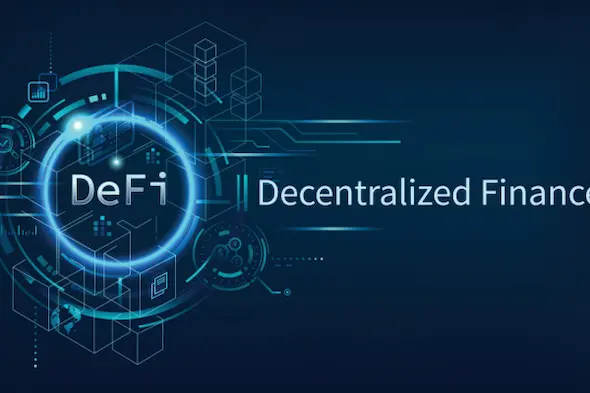
Why in News?
Decentralised Finance (DeFi) is gaining global attention as a financial innovation that enables direct peer-to-peer financial transactions—without the involvement of traditional intermediaries like banks. India, ranked third globally in DeFi value adoption, is witnessing rapid growth in this sector.
Key Takeaways
What is DeFi (Decentralised Finance)?
| Aspect | Description |
|---|---|
| Definition | A blockchain-based financial system allowing direct transactions without intermediaries. |
| Technology Base | Operates primarily on blockchains like Ethereum. |
| Core Tools | Smart contracts, decentralized apps (dApps), and digital wallets. |
How DeFi Works
- Smart Contracts: Pre-programmed digital contracts that execute automatically once conditions are met.
- No Intermediaries: Users lend, borrow, trade, or invest directly with one another.
- Global Access: Anyone with internet and a crypto wallet can participate.
- No KYC Needed: Many platforms operate without identity verification, raising both inclusion and regulatory concerns.
- Token-Based: Uses cryptocurrencies like Ether (ETH), DAI, and stablecoins for transactions.
Key Features of DeFi
| Feature | Benefit |
|---|---|
| Peer-to-peer access | No banks or brokers involved |
| Transparency | All transactions are public on the blockchain |
| Low Cost | No intermediary fees, faster settlement |
| Cross-border Utility | Functions across countries without currency exchange hassles |
| Anonymous | Offers privacy, but can aid money laundering/terror financing |
DeFi in India: Status and Trends
India’s Position
- Ranked 3rd globally in DeFi usage (Chainalysis Global Crypto Adoption Index, 2024).
- Projected DeFi market size: USD 1.7 billion by 2025
Growth Drivers
- Young, tech-savvy population
- Smartphone penetration and high-speed internet
- Strong digital infrastructure: UPI, JAM trinity (Jan Dhan, Aadhaar, Mobile)
Activities Indian Users Engage In
- Lending & Borrowing
- Staking and Yield Farming (earning rewards for locking crypto)
- Trading crypto-assets (via decentralized exchanges)
- Popular platforms: Aave, Compound, SushiSwap
Challenges and Risks
| Challenge | Impact |
|---|---|
| Regulatory Uncertainty | No legal clarity on crypto or DeFi operations in India |
| Security Risks | Vulnerability to hacks, fraud, and bugs in smart contracts |
| No Investor Protection | Users can lose funds without recourse |
| AML/CTF Concerns | Potential use in money laundering and terror financing |
| Lack of Awareness | Many users don’t fully understand the risks and mechanics |
Way Forward
- Establish clear regulatory framework with safeguards and innovation flexibility.
- Promote financial literacy about DeFi among investors.
- Encourage regulated DeFi platforms under fintech or digital asset laws.
- Collaborate globally to ensure AML/CTF compliance in cross-border transactions.
Exam Connect – Possible Questions
Prelims
1. Which of the following technologies is fundamental to the functioning of DeFi platforms?
A. Cloud computing
B. Blockchain
C. Artificial Intelligence
D. Internet of Things
Answer: B. Blockchain
2. Which of the following is not a feature of Decentralised Finance (DeFi)?
A. Centralized banking regulation
B. Use of smart contracts
C. Peer-to-peer lending
D. Transparency through blockchain
Answer: A. Centralized banking regulation
Mains
1.”Decentralised Finance (DeFi) has the potential to democratize access to finance, but it also brings new regulatory and security challenges.” Critically examine the opportunities and risks of DeFi in the Indian financial system.
2. Discuss the role of blockchain and smart contracts in shaping the future of financial services. How can India strike a balance between innovation and regulation in emerging fintech sectors?

